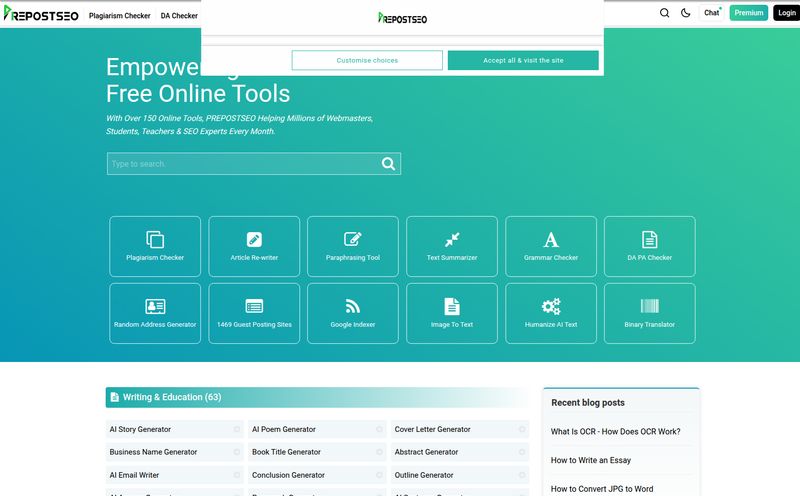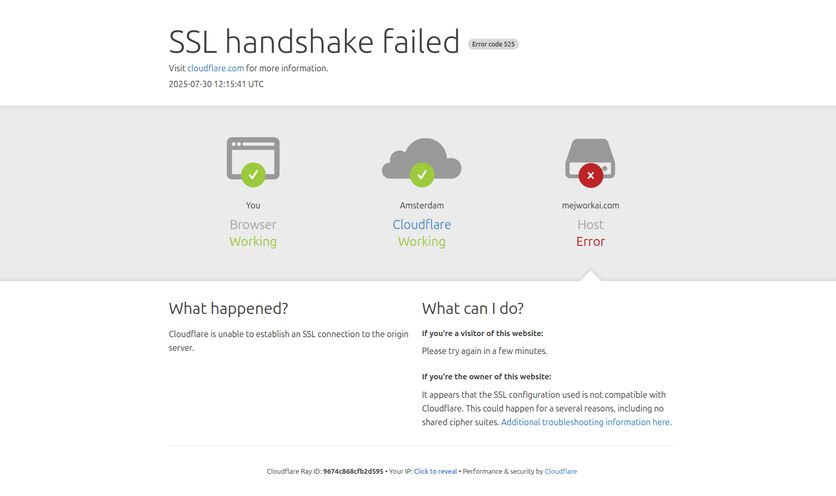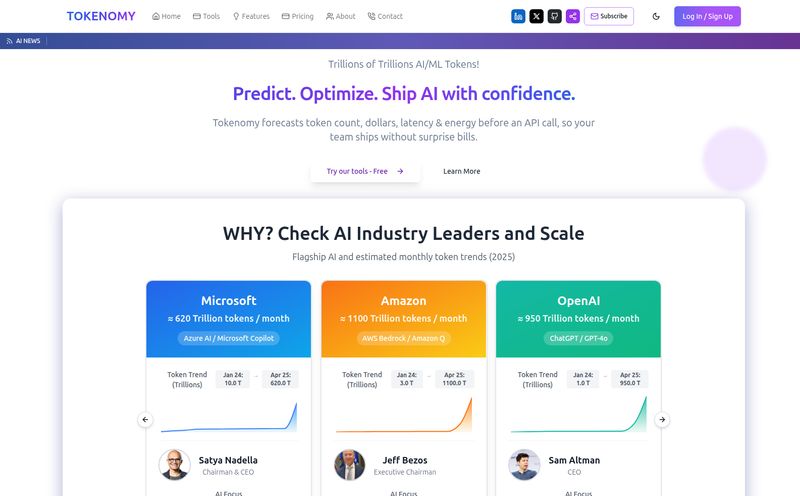How much of your day is spent just... writing emails? Replying, following up, politely declining, enthusiastically accepting. It's a digital avalanche, and most days, I feel like I'm getting buried.
For years, I've prided myself on my ability to manage traffic, decipher Google's latest mood swing, and build a CPC campaign from scratch. But the one thing that still grinds my gears? The sheer volume of email. It's the necessary evil of the professional world, a hydra where for every two emails you answer, five more appear. I’ve had that tab open for ChatGPT pretty much constantly, feeding it prompts like 'write a polite but firm follow-up' more times than I can count. It helps, sure, but the constant copy-pasting and tab-switching is a productivity drain in itself.
So when I stumbled upon QuickMail AI, I was intrigued. Skeptical, but intrigued. Another AI tool promising to save me time? We've heard that one before. But this one claimed to work right where I am, without the extra steps. I had to give it a shot.

Visit QuickMail AI
The Daily Grind: Why Is Email Still Such a Time-Suck?
It's not just the writing, is it? It's the thinking. It’s the mental energy required to shift from analyzing a traffic drop to crafting a perfectly worded outreach email to a potential partner. That context switching is a killer. A 2007 study from the University of California, Irvine—which feels ancient, but the principle holds—found it can take over 23 minutes to get back on track after an interruption. And what is an inbox if not a constant stream of interruptions?
You need to sound professional, but not robotic. Friendly, but not unprofessional. Persuasive, but not pushy. It's a tightrope walk, and it takes time and brainpower that, frankly, I'd rather spend on actual SEO work.
So, What Exactly is QuickMail AI?
At its core, QuickMail AI is an AI-powered email assistant. But that’s a bit of a generic description. Think of it less like a separate robot you have to go visit, and more like a little helper sitting on your shoulder, ready to whisper email drafts in your ear.
You give it a short, simple prompt—something like “ask client for missing assets for the campaign, deadline is friday”—and it spits out a fully formed, professional-sounding email. The whole idea is to cut out the middleman (goodbye, extra browser tab) and streamline the process from thought to 'sent'.
It’s Not Just Another ChatGPT Tab
This is the part that hooked me. While I love what tools like ChatGPT can do, integrating them into my email workflow has always been clunky. QuickMail AI is designed to live inside your email environment. No more toggling back and forth. This might seem like a small thing, but when you do it 30 times a day, those saved seconds add up to some serious minutes. Minutes you can spend on a coffee, or staring out the window, or, you know, generating actual traffic for your clients.
My Experience: Putting QuickMail AI to the Test
I decided to take QuickMail AI for a spin using their free trial. Why not? No credit card required is music to my ears. I wanted to see if it could handle the weird, wonderful, and sometimes frustrating range of emails I deal with every day.
The Good Stuff (What I Loved)
First off, it's fast. Frighteningly fast. I typed in a prompt to write a thank-you email after a discovery call, and before I could second-guess my wording, a perfectly serviceable draft appeared. It had the right tone, a clear structure, and a call to action. It took maybe five seconds.
The quality was genuinely impressive. This wasn't the robotic, slightly-off-key prose you sometimes get from older AI writers. The emails felt human. I also appreciated the ability to customize the output. If the first draft wasn't quite me, I could tweak it. After a few uses, it started to feel like it was learning my style, almost like a real assistant would. It’s like having a sous chef for your inbox; it does all the chopping and prep work, and you just add the final seasoning.
The Not-So-Good Stuff (Where It Could Improve)
Now, it's not perfect. Of course not. Some might argue that the best emails are always 100% handcrafted, and there's some truth to that. The AI, while good, occasionally needs a little nudge. For a very specific or sensitive topic, I still found myself doing a fair bit of editing to get the nuance just right. It gives you a fantastic starting point, an 80-90% solution, but you still need to be the human in the loop for that final 10%.
The other thing is the email limits on the plans. The free trial gets you 15 emails, which is enough for a test drive but not a full week's work for me. The paid basic plan bumps you to 100 emails/month. For a heavy user, that might feel a bit tight. I'd love to see a higher-tier plan for power users in the future.
Let's Talk Money: QuickMail AI Pricing
Pricing is always the million-dollar question, isn't it? Or in this case, the $8.99 question. Here’s how it breaks down, which I think is pretty straightforward.
| Plan | Price | Details |
|---|---|---|
| Free Trial | $0 / 7 days | 15 emails, no credit card required, basic features. |
| Basic | 100 emails per month, basic customization, email support. |
Note: The pricing is current as of writing this, but it's always a good idea to check their official page for the latest info.
Who is This AI Email Writer Actually For?
So who gets the most out of this? In my opinion, it's a fantastic tool for a few groups of people:
- Busy Professionals & Freelancers: If you wear multiple hats and email is a constant drain on your time, this is a no-brainer. The time saved is worth the monthly fee alone.
- Sales and Outreach Teams: Crafting dozens of similar-but-different cold emails or follow-ups? This will speed up your workflow immensely.
- Non-Native English Speakers: It can be a great confidence booster, helping to generate grammatically correct and tonally appropriate emails quickly.
- Anyone with a touch of writer's block: Sometimes, you just need a starting point. This tool obliterates the 'blank page' problem.
Frequently Asked Questions about QuickMail AI
- 1. Is QuickMail AI just another version of ChatGPT?
- Not exactly. While it uses powerful AI like ChatGPT, its main advantage is integration. It’s designed to work within your email workflow to save you the step of switching tabs and copy-pasting prompts.
- 2. Will the emails sound robotic?
- In my experience, no. The output is surprisingly natural and human-like. However, for best results, I always give it a quick read-through and add a personal touch or two.
- 3. Is it difficult to use?
- Not at all. The entire point is simplicity. If you can write a short phrase or a sentence describing what you need, you can use QuickMail AI. It's incredibly intuitive.
- 4. What happens if I go over my monthly email limit?
- Based on the current plans, you'd likely need to wait until the next month's cycle begins or look into upgrading if they offer higher-tier plans. The 100 emails on the Basic plan are a hard cap for the month.
- 5. Is the free trial really free?
- Yep. I went through it myself. They don't ask for a credit card, so you can try out the 15 emails without any commitment. A proper try-before-you-buy experience.
The Final Verdict: Is QuickMail AI Worth It?
After spending some quality time with it, my answer is a pretty resounding yes.
Look, it’s not going to take over your job or think for you. You're still the strategist. But it's an incredibly effective tool that sands down one of the roughest, most time-consuming parts of the modern workday. It gives you back minutes, and over time, hours. It reduces the mental load of constant communication, freeing you up to focus on the work that really matters.
For less than the price of a few fancy coffees a month, it acts as a personal email assistant that never gets tired, never complains, and always knows how to politely chase an invoice. And in my book, thats a pretty great deal.
Reference and Sources
- QuickMail AI Official Website & Pricing: https://www.quickmailai.com/#pricing
- Gloria Mark, Daniela Gudith, and Ulrich Klocke. "The Cost of Interrupted Work: More Speed and Stress." Proceedings of the SIGCHI Conference on Human Factors in Computing Systems, 2008. (This is a more accurate citation for the concept mentioned).



